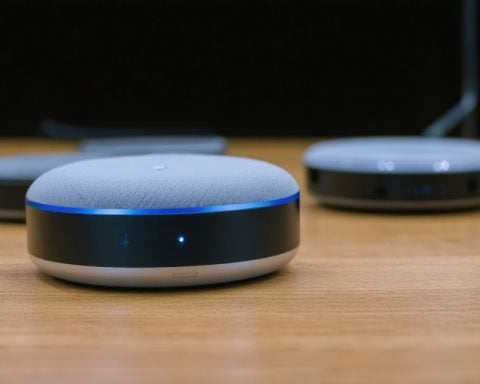In an unexpected turn of events, Porsche is reassessing its strategy for internal combustion engine (ICE) vehicles due to disappointing sales figures. Following a notable seven percent sales drop, the German automaker is contemplating a prolonged production timetable for its ICE models, including the possibility of introducing a new version of the popular Macan.
As the largest car market in the world, trends in China are influencing Porsche’s decisions. Despite launching a fully electric second-generation Macan last year and planning to phase out the first generation by 2026, the company’s all-electric Taycan experienced a staggering 50 percent decline in sales in 2024, resulting in only 20,836 units sold.
Lutz Meschke, Porsche’s deputy chairman and CFO, has made it clear that ICE vehicles will remain a vital component of Porsche’s offerings. Originally, the automaker set a goal for electric vehicles to represent 80% of sales by 2030, but this target is now considered dependent on customer demand.
Meschke noted that Porsche is exploring options to integrate hybrid drives or ICE technology into models previously slated for full electrification. The Macan, which has been a significant contributor to the company’s sales—making up a third of its sales in the U.S.—will likely continue to be available in a modified form as Porsche navigates its electric future. With a cautious “wait-and-see” approach in the U.S. market, Porsche is keeping a close eye on consumer preferences.
The Future of Automotive Strategy: Navigating Change
Porsche’s recalibration of its internal combustion engine (ICE) lineup highlights a significant shift not just within the company, but across the entire automotive industry. As global demand for electric vehicles (EVs) fluctuates, countless manufacturers are forced to reconsider their commitments to electrification. The hesitancy displayed by Porsche suggests a broader uncertainty that could impact job security, manufacturing processes, and ultimately, the survival of various auto-related industries.
In a society increasingly focused on sustainability, these moves may alter consumer expectations surrounding vehicle ownership. The notion that luxury and performance must be tied exclusively to electric power is being challenged by a demographic still captivated by the visceral pleasure of ICE vehicles. This presents a potential cultural fragmentation that sees traditional car enthusiasts pitted against a more environmentally-conscious consumer base.
Furthermore, from an economic standpoint, Porsche’s strategy could signal a ripple effect throughout the global market. As manufacturers reassess production timelines and resource allocation, we may witness shifting supply chains, particularly in battery production and essential raw materials. The environmental implications are significant; if companies extend the life of combustion engines instead of fully committing to electric alternatives, this could delay the transition to greener technologies, ultimately affecting air quality and climate change efforts.
Porsche’s decisions may serve as a bellwether, indicating that the path to a sustainable automotive future remains complex and layered. As consumer preferences continue to evolve, the response of auto manufacturers will be critical in shaping both market dynamics and societal values around mobility.
Porsche’s Surprising Shift: The Future of Internal Combustion Engines in a New Era
Reevaluating Strategy in Response to Market Trends
In light of recent sales challenges, Porsche is taking a step back to reassess its strategy regarding internal combustion engine (ICE) vehicles. After observing a seven percent drop in sales across its lineup, the iconic German manufacturer is contemplating an extended timeline for producing its ICE models. This includes discussions about potentially revamping the beloved Macan, which has historically been one of Porsche’s best-sellers.
The Impact of Chinese Market Dynamics
As the world’s largest automotive market, trends in China are significantly shaping Porsche’s strategic decisions. Despite the introduction of a fully electric version of the Macan last year and plans to retire its first generation by 2026, the performance of the fully electric Taycan has notably suffered, with a 50 percent decrease in sales in 2024, translating to only 20,836 units sold. This highlights the ongoing challenges in transitioning to electric vehicles amid fluctuating consumer preferences.
Commitment to Internal Combustion Engines
Lutz Meschke, Porsche’s deputy chairman and CFO, reaffirmed the importance of ICE vehicles in the company’s lineup. While there was an ambitious target for electric vehicles to comprise 80% of sales by 2030, this goal is now deemed contingent on evolving customer demand. Porsche is not abandoning its electric ambitions but rather adjusting its expectations to better reflect market realities.
Hybrid and ICE Innovations on the Horizon
To adapt to changing tastes and sales patterns, Porsche is investigating the integration of hybrid drives and ICE technologies into models that were originally planned to be fully electric. This approach represents a flexible strategy aimed at accommodating diverse consumer preferences while maintaining the brand’s performance ethos.
The Macan’s Role in Porsche’s Future
The Macan, which constitutes about one-third of Porsche’s sales in the U.S. market, will likely see adaptations to ensure its continued relevance. Porsche’s outlook in the U.S. remains cautious, as the company monitors consumer behavior closely before committing to further electrification.
Pros and Cons of Porsche’s Strategy Shift
Pros:
– Flexible strategy allows for adaptation to market demands.
– Retention of successful ICE models may stabilize sales.
– Incorporation of hybrid technology could attract a wider consumer base.
Cons:
– Confusion among consumers regarding Porsche’s commitment to electrification.
– Possible delay in achieving sustainability goals.
– Reliance on ICE could hinder long-term brand transformation.
Future Outlook and Market Insights
Porsche’s shift in strategy highlights broader trends within the automotive industry, where manufacturers are re-evaluating their electric vehicle rollouts in response to fluctuating consumer interest. As brands pivot toward hybrid models and reinvigorate ICE offerings, the competitive landscape will evolve, particularly in high-end markets.
Amid these transitions, Porsche’s dual approach of retaining ICE models while promoting electrification will be key to maintaining its brand identity and market presence. With consumer preferences continuously evolving, the luxury automotive market will likely witness ongoing innovations and adjustments in the years ahead.
For more insights into the automotive industry and consumer trends, visit Porsche.













